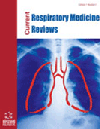-
oa Bedside Lung Ultrasound in the Care of the Critically Ill
- Source: Current Respiratory Medicine Reviews, Volume 6, Issue 4, Nov 2010, p. 271 - 278
-
- 01 Nov 2010
Abstract
Objective: To introduce the reader to the topic of lung ultrasound. The considerable value of lung ultrasound has recently gained attention and it is rapidly becoming a vital point of care investigation in patients with dyspnoea or haemodynamic instability. Although normal lung tissue is not directly visualized by ultrasound, the presence of various artifacts enables the clinician to diagnose several pathologic entities. The intercostal spaces form an ultrasound window and the hyperechoic parietal pleura present between any two ribs is the major source of diagnostic artifacts. Sliding of the visceral against parietal pleura identifies lung inflation in the scanned area and the respective proportions of air and fluid in the lung tissue determine the way parietal pleural reverberation artifacts are reflected and displayed. Lung consolidation resembles other parenchymal organs such as liver not only on gross pathological examination but also is similarly reflected by ultrasound. Pleural effusion is diagnosed above the diaphragm usually as a hypoechoic space and the volume of fluid present can be estimated. Other advantages of lung ultrasound include bedside availability, dynamic nature, simplicity and the absence of radiation exposure.


